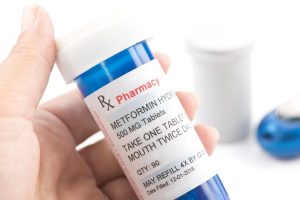U.S. cases of syphilis have soared past numbers seen just a decade ago, new government statistics show.
The grim numbers are for 2022, the latest year for which an accurate tally is available.
More than 202,000 cases were recorded among Americans that year — a 17% rise over 2021 numbers and an 80% rise over numbers recorded in 2018, the report from the U.S. Centers for Disease Control and Prevention found.
Congenital syphilis — when the disease is passed from a mother to her newborn — can be very harmful to infants, and those cases have also risen at an alarming rate. Over 3,700 such cases were reported in 2022, the CDC reported in November, including 231 stillbirths and 51 infant deaths.
Left untreated, syphilis in adults can damage the heart and brain and cause blindness, deafness and paralysis.
Why the steady, sharp rise in cases? Experts believe that reductions in condom use have occurred as more Americans are turning to drug regimens that effectively prevent HIV infections without condoms.
According to the New York Times, condom use by high school students has fallen by 8 percentage points between 2011 and 2021.
The number of clinics focused on sexual health has also declined nationwide, experts say.
“Sexual health services remain inadequate relative to the need pretty much everywhere,” Dr. Jay Varma, chief medical officer at Siga Technologies and a former deputy commissioner of health for New York City, told the Times.
“But it’s particularly a problem here in the United States,” Varma said. “When you miss one case, you then end up with two more cases, and if you miss two cases, you then end up with four. That’s how epidemics grow.”
Outbreaks can happen anywhere. According to the new report, South Dakota recorded the highest rate of syphilis infections in 2022 of any state, followed by New Mexico. Arkansas, Oklahoma and Mississippi took the third, fourth and fifth spots on that list.
Race and ethnicity left some populations more vulnerable. A full 30% of cases occurred among Black Americans, while Native American/Alaska Natives had the highest rate of any ethnic group, at 67 cases per 100,000.
The crisis has been compounded by a shortage of drugs crucial to treating syphilis. Bicillin, a long-acting injectable form of penicillin made by Pfizer, has been in short supply in the United States since the middle of 2023.
It is the recommended treatment for syphilis in adults and it’s the only recommended treatment for pregnant women to prevent syphilis passing from mother to newborn.
Earlier this month, the U.S. Food and Drug Administration said it would allow the importation of a different syphilis drug from a French drugmaker.
In a letter from Laboratoires Delbert, the Paris-based company said it’s working with the FDA to temporarily import 3.5 million units of Extencilline, which is not approved for use in the United States.
The CDC has also recommended that people at higher risk for syphilis take the antibiotic doxycycline after unprotected sexual encounters. Studies have shown that taking the antibiotic doxycycline within 72 hours of sex might help prevent a sexually transmitted infection.
Dr. Jonathan Mermin directs the National Center for HIV, Viral Hepatitis, STD and TB Prevention at the CDC. Speaking to the Times, he said the CDC is also pushing research into a simple test for syphilis that can be used at clinics and might be available within the next two years.
He believes that curbing the ongoing epidemic of syphilis will require organized efforts by doctors, hospitals, community health centers and drug treatment programs.
“Wishing hard won’t prevent sexually transmitted infections,” Mermin said. “We need sustained public health efforts.”
More information
Find out more about syphilis at Penn Medicine.
SOURCES: Sexually Transmitted Infections Surveillance, Jan. 30, 2024; New York Times
Copyright © 2024 HealthDay. All rights reserved.










-300x225.jpg)














